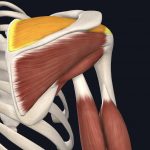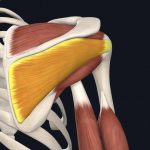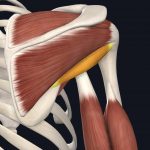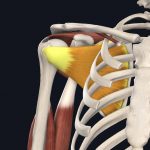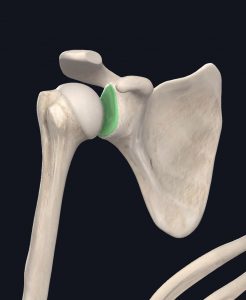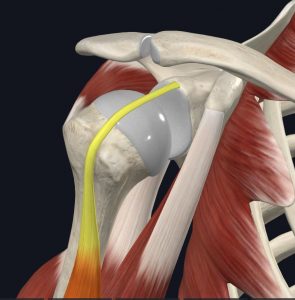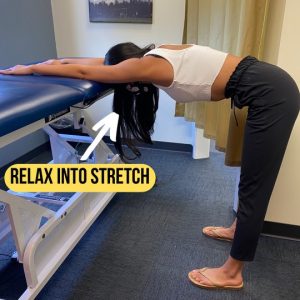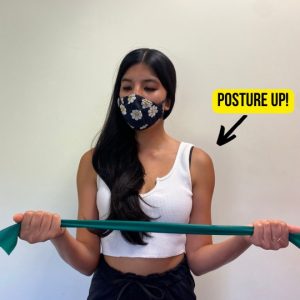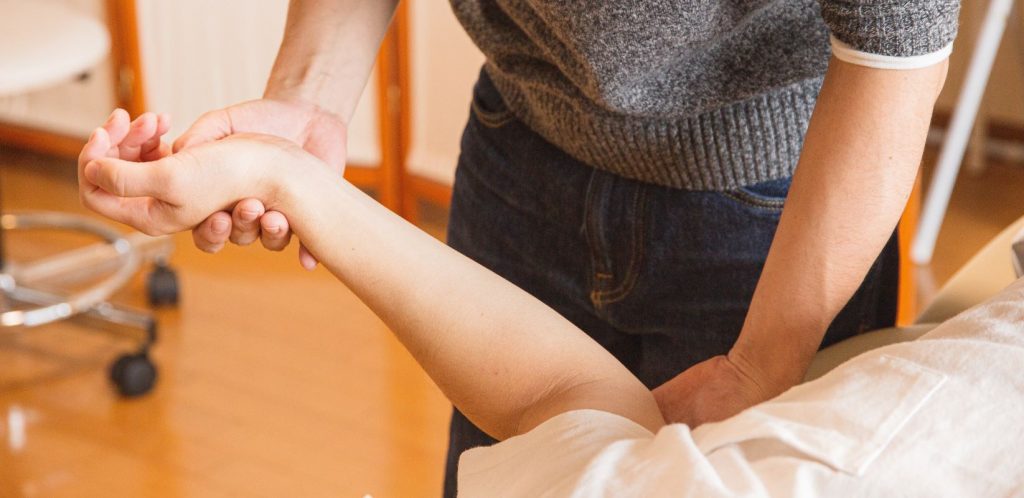
Do you have shoulder pain? Do you notice instability or difficulty with reaching and lifting your arm? Have you experienced clicking or catching in the shoulder when swimming or hitting a tennis ball?
If you play overhead sports or perform repetitive lifting activities, you may notice deep, aching, or sharp shoulder pain that even radiates into your arm. It may be difficult to reach out to the side or feel weak when lifting heavy objects.
Sounds like you? This may be a SLAP injury!
What is a SLAP Tear?
A SLAP tear is a superior labral tear in the anterior posterior direction. That means the cartilage on the surface of your shoulder joint has torn or frayed from front to back.
The cartilage (known as the glenoid labrum) in the shoulder joint to help improve stability with movement. A stable shoulder joint is less prone to ligament sprains, muscle strains, and dislocation.
However, part of your biceps muscle attaches to the top portion of this cartilage, creating a vulnerable spot during repetitive activities. Tearing and shearing to this area is called a SLAP tear, and it’s very common.
Symptoms of a SLAP tear include less shoulder flexibility, generalized weakness, locking, popping, clicking, or grinding. In some cases, you may feel that the shoulder may “pop” out of place, although this feeling is more common with a Bankart tear, which is a different type of cartilage tear in the shoulder.
SLAP tears frequently occur with rotator cuff tears. They can both occur from the same activities, like rapid and repetitive shoulder movements, falling, and heavy lifting motions.
Let’s Discuss Shoulder Anatomy
The shoulder joint is surrounded by several muscles that assist in stability and strength. They provide proper mechanics when we lift our arm. The rotator cuff is a group of four muscles which attach various portions of the shoulder blade to your upper arm. The rotator cuff is responsible for stabilizing the shoulder during almost all arm movements, especially if it’s outstretched.
- Supraspinatus
- Infraspinatus
- Teres Minor
- Subscapularis
Images Courtesy of Complete Anatomy
As mentioned before, part of your biceps muscle attaches to the top part of the glenoid labrum in the shoulder joint. The biceps itself assists in shoulder and elbow flexion, like when you lift your arm or do a biceps curl.
- Labrum (highlighted)
- Biceps attachment to the labrum (highlighted)
Images Courtesy of Complete Anatomy
But, the labrum can be frayed or irritated with repetitive overhead lifting and shoulder rotation, which can result in pain and weakness. Most pain occurs in the front or top of the shoulder, but it can occasionally radiate down the arm or into the back. A weak rotator cuff can often make this injury feel worse because it’s not helping to stabilize the shoulder as well as it should.
What Causes a SLAP Tear?
A few things can cause a SLAP tear. Sometimes it’s an immediate injury, and other times it can develop with time.
- Repetitive overhead lifting or reaching, like if you’re painting your ceiling or cleaning out the garage shelves.
- Causing repetitive stress to your shoulder during throwing and racquet sports like tennis.
- Sustaining direct trauma such as a fall or motor vehicle accident.
- Experiencing wear-and-tear over time when the shoulder isn’t flexible or strong enough to withstand repetitive everyday activities.
How Severe is my SLAP tear?
A SLAP tear is graded based on the degree of detachment of the glenoid labrum from it’s bony surface in the shoulder. If the biceps attachment to this area is also injured, it can influence the severity level.
- Type 1: The labrum shows signs of wearing or fraying, but functions normally. This is most common in middle-aged and older individuals.
- Type 2: The labrum and biceps tendon are torn away from the shoulder socket. This is the most common type.
- Type 3: The labrum and biceps tendon are detached from the glenoid, and the labral tissue is caught in the shoulder joint.
- Type 4: Tearing in the biceps tendon occurs. (1)
If you have a Type 1 or Type 2 injury, you can be rehabilitated with conservative treatment like physical therapy alone. Those with more severe tears may need a follow-up with an orthopedic specialist, and may require surgery.
Can a SLAP Tear Heal on Its Own?
YES! SLAP tears are frequently seen in an outpatient physical therapy clinic, and the less severe types can heal on their own with the right guidance. At JACO Rehab, physical therapists can help guide you to success with conservative management!
At your first session, well will evaluate your shoulder range of motion, strength, and specific functional limitations, to aid in formulating specific goals and treat the underlying cause of your shoulder pain and/or weakness.
Things to Keep in Mind for Your First Session
- Arrive early to fill out any necessary paperwork. Have your ID and insurance card ready.
- Wear athletic clothing. If comfortable, wear something sleeveless so your physical therapist can assess the tissues and joints better and observe the quality of your motion.
- Think about your goals. What is it that you want to achieve during and after physical therapy?
- Be sure to ask a lot of questions! We are here to help by treating your injury directly and also by making YOU an integral part of your rehab team. We want you to be fluent with your exercises and fully understand how they address your specific needs.
Physical Therapy for SLAP Tears
The length and course of your care will depend on your injury’s severity, location, and any underlying medical conditions. All of these play a role in influencing healing time and efficiency. We usually recommend planning to see a physical therapist two times per week, for at least four to six weeks.
Your physical therapist will look at both active and passive shoulder motions, nitty-gritty joint movement, specific strength of certain muscle groups, and activity tolerance like lifting and reaching. Stretches and exercises will be prescribed unique to your presentation.
Each of our subsequent treatment sessions are around 50 minutes long, and focus on a combination of hands-on interventions, stretches, and strengthening exercises. You will be given a home exercise program between your scheduled sessions so you can make gains on your own, too.
These will be progressed as appropriate, so your hard work and compliance are incredibly important to success. In fact, doing your home exercises is critical to your success in physical therapy. Remember: you only see us once or twice a week. What are you doing the rest of the time to recover?
While we strive to meet specific range of motion and strength measurement goals at the end of your treatment, ultimately we hope to help you return to what you love, like working out at the gym or getting back on the court!
Two Easy Exercises for SLAP Tears
These are two exercises that may help improve initial pain and range of motion deficits when diagnosed for your SLAP tear. These are often prescribed early in your rehabilitation, and should be performed without pain. If you feel pain, reset and try again. Or, ask your physical therapist for guidance.
- Passive table flexion stretch: This exercise emphasizes the range of motion needed to get back to overhead activities. It is a passive activity, so you should relax into it. This can be performed standing or sitting.
- Prop your arms onto a table, counter, shelf, or any surface available at home.
- Keep your shoulders and neck relaxed while bowing to stretch your arms overhead. Only stretch as far as there is no increase in pain.
- Perform three to five times. Hold for 30 seconds. Repeat often throughout the day.
- Shoulder external rotation activation: This exercise aids in improving posture and rotator cuff strength, both of which are helpful in placing the shoulder in a stress-free position. It can be performed on your back, seated, standing.
- Keep your chest up, shoulder blades squeezed together, and keep elbows close to your side.
- With a light resistance band, pull until you feel tension and your forearms are at least parallel to each other. Hands can be slightly outside of elbows, but not too far.
- Hold for 1o seconds to start. You should feel the outside of your shoulder work, but no pain. Repeat 5-10 times or increase the time to 30 seconds and repeat 3 times. Perform 2x per day.
Reach Out!
We wish you luck on your recovery. For more information about scheduling physical therapy with us to assist in your journey, please call (808) 381-8947 or email us at info@jacorehab.com.
Sources
1. Familiari F, Huri G, Simonetta R, McFarland EG. SLAP lesions: current controversies. EFORT Open Rev. 2019 Jan 28;4(1):25-32. doi: 10.1302/2058-5241.4.180033. PMID: 30800477; PMCID: PMC6362364.
Written by Kristen Shimabukuro, DPT
